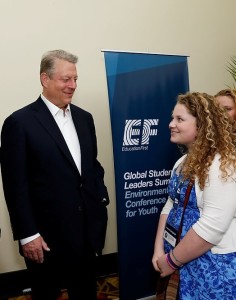The idea for this blog came to me when my friend and I were working out at Rec Hall. Before beginning cardio we stopped to refill our water bottles, mine a reusable water bottle and my friend’s a used plastic disposable water bottle. As we filled our water bottles we counted with the machine to see how many disposable plastic water bottles we saved and discovered that mine saved four and hers saved three. This confused me since the hydration station said that my friend saved three plastic disposable water bottles when she simply just filled up one used disposable bottle.
To solve this problem I decided to research plastic water bottles and water efficiency and conservation and concluded that this issue was to vast to be simply covered by one blog post. Therefore I will be using multiple blog posts to reveal my findings and calculations, the first
of which I will dedicate to the actual waste associated with the use of plastic water bottles.
To start this investigation off, I went online to Penn Sate’s sustainability website and discovered that it takes three liters of water to produce one liter of bottled water (Penn State). This explains why my friend’s water bottle saved three plastic bottles when she refilled it. On the same website I read that in 2006 Americans alone bought 30 billion plastic water bottles (Penn State). Using these findings, I calculated that in 2006 Americans wasted 60 billion liters of water by consuming 30 billion plastic water bottles:
\(3 \text{ liters of water used per bottle}\times 30 \text{ billion plastic water} = 90\text{ billion liters of water}\)
90 billion liters of water used to make plastic water bottles – 30 billion liters of water actually in the 30 billion plastic water bottles = 60 billion liters of wasted water due to the production of plastic bottles in 2006
These findings are repulsive since Americans waste double the amount of water to just bottle water that is less regulated than regular tap water. However, these numbers are even more disturbing when compared to the fact that one billion people world wide do not have access to clean drinking water, as supported by the same Penn State website.
To find out how many liters of water are necessary per day per person I found a report entitled, Water Requirements, Impinging Factors, and Recommended Intakes which said that the minimum water requirements per person per day are between 3 to 6 liters (Grandjean, World Health Organization). For this blog, I am going to use 3 liters since that is the bare minimum. So to calculate how many liters of water are needed for a billion of people to survive I did the following:
\[3 \text{ liters a day per person}\times 1 \text{ billion people} = 3 \text{ billion liters per day}\]
With the 60 billion liters of water wasted in America in 2006 to make plastic bottles, one billion people could have been supported for 20 days:
\[60 \text{ billion liters of water} / 3\text{ billion liters of water per one billion people per day} = 20 \text{ days}\]
Although this number may seem insignificant compared to the 365 days in one year, this figure was from 2006 and just included water bottles bought in America. Today the amount of plastic water bottle consumption has increased even more throughout the world. It is important that citizens take other people and countries into consideration when purchasing unnecessary disposable plastic water bottles. In my next blog I will discuss alternatives to bottled water to help conserve and manage water more efficiently,







